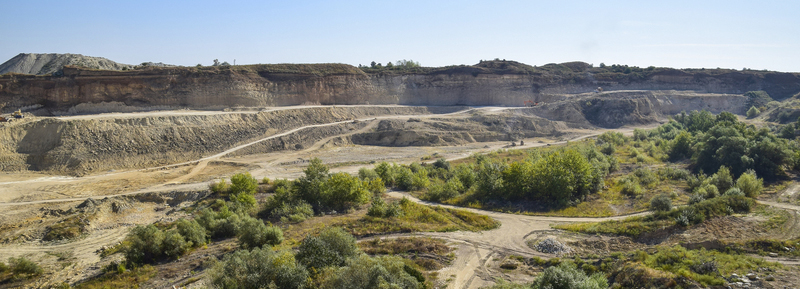The Comprehensive Environmental Response, Compensation, and Liability Act of 1980 (“CERCLA”) has been a prodigious generator of litigation for decades. First, the government sought to compel potentially responsible parties (“PRPs”) to clean up contaminated sites. Then, those PRPs who were found liable or who settled with the government sought contribution from other PRPs. Now, even after these interminable disputes over liability for remediation costs are resolved, the implementation of costly remedies can give rise to yet more litigation if those remedies fail. A recent decision by the federal district court in Philadelphia in Cottman Avenue PRP Group v. AMEC Foster Wheeler Environmental Infrastructure Inc., arising from one of the earliest CERCLA Superfund sites, is an example of this last type of case and offers important lessons both for parties responsible for remediation and the contractors they hire to fulfill those obligations.
A predecessor of AMEC Foster Wheeler (“AMEC”), acting as a remediation contractor, designed a sheet pile wall intended to prevent PCB-contaminated soil at a Philadelphia Superfund site from falling into the Delaware River. Construction of the sheet pile wall was completed in 2010, but by 2012, cracks in the wall and unwanted movement of the wall were observed. The PRP group, making claims both under CERCLA and its contract with AMEC, sued AMEC in 2016 after the PRP group had to repair the wall.
AMEC prevailed on the CERCLA claims based on its assertion of the statutory defense for “response action contractors.” That is, CERCLA provides that “a response action contractor with respect to any release or threatened release of a hazardous substance … shall not be liable … to any person for injuries, costs, damages, expenses, or other liability … which results from such release or threatened release”; however, a response action contractor nonetheless will be liable for “a release that is caused by” the contractor’s negligence. 42 U.S.C. § 9619(a)(1)-(2). (The New Jersey Spill Act includes a similar defense for contractors, see N.J.S.A. 58:10-23.11g1.) The court held that AMEC could not be liable under this standard because the PRP group incurred costs in response to a threatened release of PCBs only, and could not prove that an actual release occurred. In fact, the PRP group’s repeated assurances to the United States Environmental Protection Agency that the defective sheet pile wall did not cause any releases to the river ultimately proved fatal to its CERCLA claim against AMEC. The court concluded that, under the “plain terms” of the response action contractor defense, a contractor cannot be liable for a threatened release of hazardous substances under CERCLA because the statute immunizes them from liability for a release or threatened release, but the exception creating liability refers only to a release caused by the contractor’s negligence. Although a reasonable interpretation of this CERCLA provision when read in isolation, it seems inconsistent with the statute’s general liability scheme, which imposes liability for both releases and threatened releases.
In contrast to the dismissal of its CERCLA claim, the PRP group had mixed success on its contract claims. Yet, the success or failure of the contract arguments rested not on the intent of the parties as expressed in the contract, but rather on certain background legal rules that the parties may not have contemplated when they entered the agreement.
First, the court found that the warranty provided by AMEC for the remediation work had expired and, as a result, the breach of warranty claim brought by the PRP Group was untimely. Under Pennsylvania law, unless the contract specifically provides otherwise, the “discovery rule” does not apply to breach of warranty claims, so the four-year statute of limitations applicable to breach of warranty begins to run upon completion of the work under the contract, regardless of when the defect causing the breach of warranty becomes apparent. Here, AMEC’s final inspection of the sheet pile wall under the contract occurred in 2011 and the PRP group did not sue until 2016, so the breach of warranty claim was barred. This is a harsh rule for remediating parties, who might not expect that their warranty for a remedy intended to last for decades would evaporate after four years.
AMEC also raised timeliness as a defense to the PRP group’s claim under the contractual indemnity, but the court ruled in favor of the PRP group on that issue. Specifically, AMEC unsuccessfully argued that its indemnification obligations ended upon termination of the contract in 2011 because the indemnification clause did not state that it survived termination, whereas other terms of the contract included explicit “survival” language. The court analogized the indemnification clause to “structural provisions relating to remedies and dispute resolution,” such as an arbitration clause, which usually survive termination of the contract. Thus, in contrast to the warranty, specific language was not needed to preserve indemnification claims that might arise after the remedy was constructed.
Finally, AMEC could not escape claims that it breached the contract by not procuring all of the required insurance policies. Although during the term of the contract AMEC intermittently provided certificates of insurance to the PRP group, in discovery it could not produce insurance policies that satisfied the requirements under the contract. Unlike the breach of warranty claim, the “discovery rule” did apply to this breach of contract claim, so the PRP group could bring the claim even though the breach—the failure to obtain insurance—had occurred long before the PRP group brought the lawsuit in 2016.
Remediating parties and the engineers and contractors they hire should observe three takeaways from the Cottman Avenue case:
- Response action contractors have a powerful and unique defense to statutory environmental claims. Strict liability does not apply to response action contractors under CERCLA (or the New Jersey Spill Act), and, under this case, even a negligent contractor would not be liable for threatened releases. Like the Cottman Avenue PRP Group, remediating parties may be caught in a bind between assuring regulators that no contaminants have been or will be released and preserving potential CERCLA claims against their contractors.
- Specify survival of warranties and indemnification provisions. Contracts often contain an explicit period that a warranty will remain in effect and also provide that indemnities will survive termination of the agreement. The failure to include these terms in this contract led to extensive litigation that could have been avoided and that probably produced results that the parties would not have expected when they entered the contract.
- Pay attention to insurance requirements (and other ongoing obligations). Before agreeing to maintain certain insurance, parties should make sure they have the ability to provide that insurance or evidence thereof, which it seems was not done in this case. It may be tempting to put a contract out of sight and out of mind after it is signed, but without a system to make sure ongoing insurance obligations are met, a party may find itself in the unfortunate position of acting as its own insurer.
For more information, please contact the author Michael Kettler at mkettler@riker.com or any attorney in our Environmental Practice Group.




